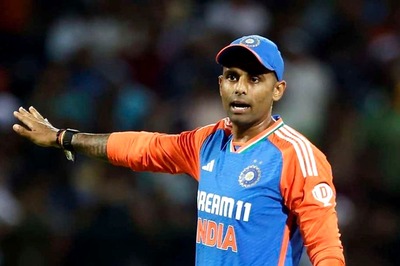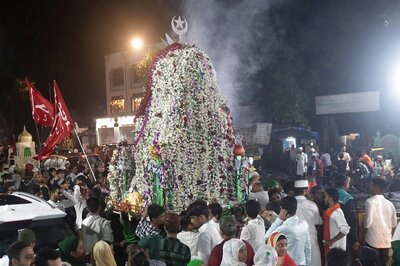
views
Sriharikota (Andhra Pradesh): Carrying a 3.8 tonne rover to the moon is no mean feat, which is why scientists at the Indian Space Research Organisation (ISRO) entrusted the job to the Geosynchronous Satellite Launch Vehicle - Mark III (GSLV Mk-III), India's most powerful launcher to date.
Nicknamed 'Bahubali', the GSLV Mk-III will lift off with Chandrayaan-2, India’s second lunar mission, from the Satish Dhawan Space Centre on a new date now with ISRO calling off Tuesday's launch after technical snag.
We are less than five hours from the historic launch of #Chandrayaan2Meanwhile observe people being dwarfed by the 14 storey high #GSLVMkIII-M1 vehicle. pic.twitter.com/o6fEK9AxlP? ISRO (@isro) July 14, 2019
About 16 minutes into its flight, the rocket will put the Chandrayaan 2 into orbit. A series of maneuvers will be carried out to raise its orbit and put Chandrayaan-2 on lunar transfer trajectory.
On entering the Moon's sphere of influence, on-board thrusters will slow down the spacecraft for lunar capture. The orbit of Chandrayaan-2 around the moon will be circularised to 100x100 km orbit through a series of orbital maneuvers.
On the day of landing, the lander will separate from the orbiter and then perform a series of complex maneuvers comprising of rough braking and fine braking. Imaging of the landing site region prior to landing will be done for finding safe and hazard-free zones.
The lander Vikram will finally land near South Pole of the moon on September 6.
Subsequently, the rover will roll out and carry out experiments on lunar surface for a period of 1 lunar day, which is equal to 14 Earth days. The orbiter will continue its mission for one year.
GSLV-Mk III is designed to carry 4 tonne class of satellites into Geosynchronous Transfer Orbit (GTO) or about 10 tonne to Low Earth Orbit (LEO), which is about twice the capability of GSLV Mk II.
The vehicle has two solid strap-on motors, a core liquid booster and a cryogenic upper stage.
To date, ISRO has sent up three GSLV-Mk III rockets.The first one was on December 18, 2014, carrying the Crew Module Atmospheric Reentry Experiment. The second and third GSLV-Mk III went up on February 5, 2017 and November 14, 2018, carrying communication satellites GSAT-19 and GSAT-29, respectively.
Interestingly, GSLV-Mk III will also be used for India's manned space mission slated in 2022.


















Comments
0 comment